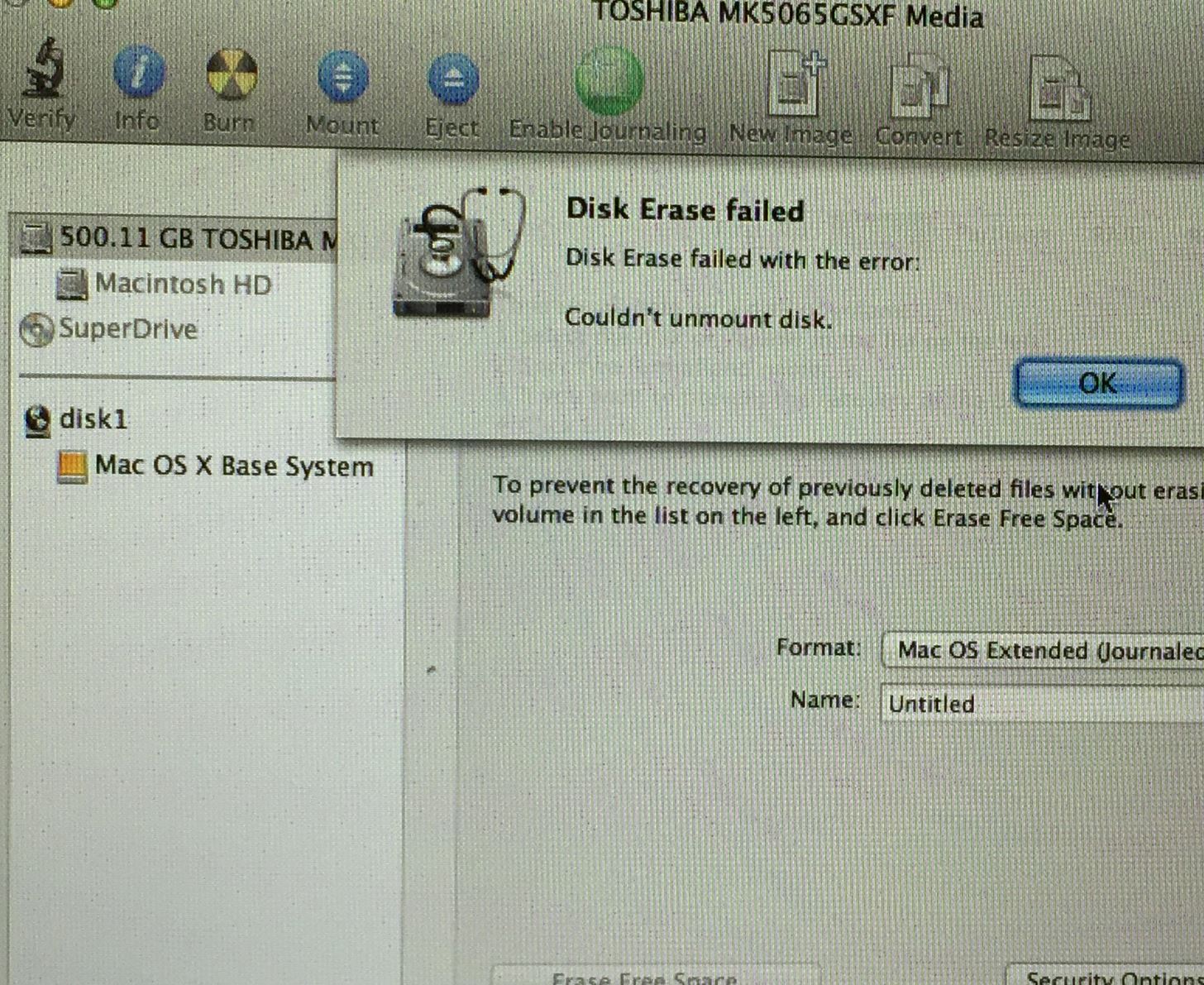

- #Unmount disk image from os x how to#
- #Unmount disk image from os x pro#
- #Unmount disk image from os x iso#
Using my MacBook Pro which has a 120GB hard drive I booted using an external FireWire drive that had OS X 10.5 and VMware Fusion 2.0.4 and I manually created a virtual hard drive that pointed to the internal hard drive as a raw disk. I'm going to provide this following information strictly as a proof of concept however I strongly advise not running low level disk utilities such as this through a Virtual Machine on a Raw Disk and if you choose to ignore this then at a minimum make sure all User Data has been backed up and that the computer is connected to an Uninterrupted Power Supply and have nothing more than what's necessary to be running and do not use the computer for anything else during the process.
#Unmount disk image from os x how to#
I would greatly appreciate it if someone knows how to do this or could think it through. The issue is how to give the VM control over the internal physical hard drive rather than to let OS X have control over it. I can run VMWare off of an OS X virtual disk with no problem. I've seen some posts that are oriented towards people who are using bootcamp to run VMWare from a physical partition, but that is not my situation. I need to give Spinrite access to the physical drive, not to a shared folder or a single partition, but to the physical drive.

Its easy to attach external USB drives or internal IDE drives (CD ROM) to the VM, but the Fusion interface does not provide an option for attaching an internal hard drive to the VM.
#Unmount disk image from os x iso#
Simply run the following command from the terminal either “ root” or “ sudo” to unmount a mounted ISO image.In order to perform drive repair and maintenance on an internal OS X hard drive, I would like to be able to:ġ) Boot off an external (USB) drive into OS X (which I can do, using a clone of a working OS X installation and pressing the Option key when booting, then selecting the USB disk as the boot disk).Ģ) Run VMWare Fusion 2.x (which works fine).ģ) Load a DOS VM and run Spinrite off of the CDROM drive (which works fine and can access any drive attached to the VM), andĤ) Give Spinrite (which is running in the VM off the USB drive) access to the internal physical hard drive on the Mac (this is where I need some instructions). View ISO Files in Linux How to Unmount an ISO Image in Linux

For example, the directory listing of a Fedora-Server-dvd-x86_64-36-1.5.iso image would look like this. You will see the list of files of an ISO image, that we have mounted in the above command. It will only mount in read-only mode, so none of the files can be modified. loop -The loop device is a pseudo-device that is often used for mounting CD/DVD ISO images and makes those files accessible as a block device.Īfter the ISO image is mounted successfully, go to the mounted directory at /mnt/iso and list the content of an ISO image.-o – Options are necessary with a -o argument followed by a separated comma string of options.ISO 9660 – It describes the standard and default filesystem structure to be used on CD/DVD ROMs.-t – This argument is used to indicate the given filesystem type.Once you created a mount point, use the “ mount” command to mount an iso file called “ Fedora-Server-dvd-x86_64-36-1.5.iso“. To mount an ISO image on RedHat-based or Debian-based Linux distributions, you must be logged in as a “ root” user or switch to “ sudo” and run the following commands from a terminal to create a mount point.


 0 kommentar(er)
0 kommentar(er)
